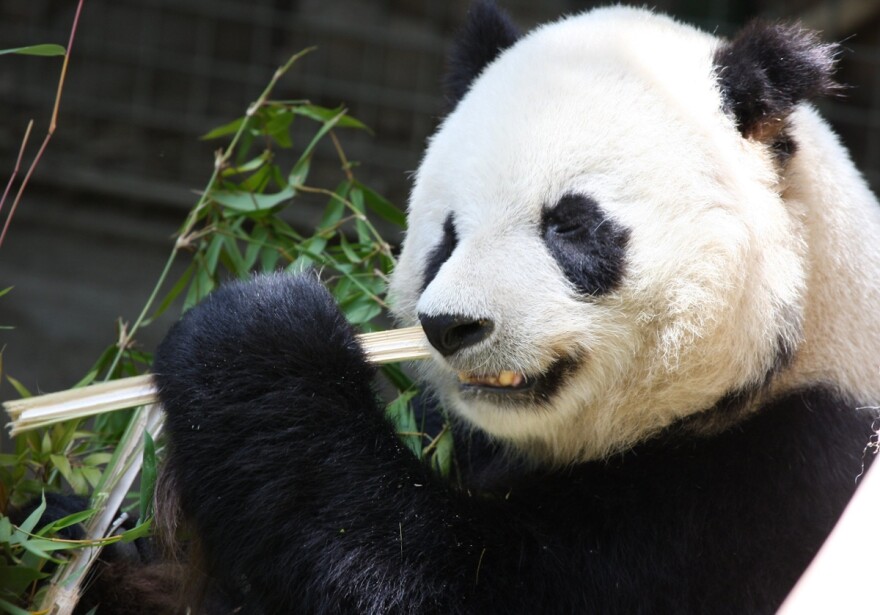Do you ever get hungry, but can't decide what to eat? Sometimes there are too many options.
Giant pandas have it easy. They just have bamboo for breakfast, lunch, and dinner, and don’t give food another thought. At least not these days, but they used to eat all kinds of things.
Scientists found that as recently as 5,000 years ago, giant pandas had a much more diverse diet than they do today. It was a surprising find, since we previously thought it’s been over two million years since their diet was any different. The researchers looked at isotopes in the bodies of modern pandas and fossils of ancient pandas to come up with this new date.
Isotopes are atoms of an element that have different numbers of neutrons. Heavy isotopes are those with more neutrons than average, and light isotopes are those with fewer neutrons than average. Foods have different levels of heavy or light isotopes that then get incorporated into the bones, hair, nails, and teeth of the animal that eats them, and by measuring the ratios of heavy to light isotopes in these animals, scientists can get an idea of the kinds of foods they eat.
Modern-day pandas have a very low heavy to light ratio because of their bamboo-only diet. But pandas from 5,000 years ago had ratios similar to other herbivores, implying that, like other herbivores, they ate a variety of plants.
Maybe pandas used to struggle between picking food options, too.
Read more
- Black and white camouflage
- WTIU News - Should there be rules restricting bamboo planting?
- The sort-of giant cavefish of India
Source
D: I’m hungry, but I can’t decide what to eat—nothing sounds good. Does that ever happen to you, Yael?
Y: I know the feeling, Don.
D: Giant pandas have it easy. They just have bamboo for breakfast, lunch, and dinner, and don’t give food another thought.
Y: Not these days, but they used to eat all kinds of things.
D: You mean millions of years ago, right?
Y: Nope. Scientists found that as recently as 5,000 years ago, giant pandas had a much more diverse diet than they do today. It was a surprising find, since, like you said, we previously thought it’s been over two million years since their diet was any different. The researchers looked at isotopes in the bodies of modern pandas and fossils of ancient pandas to come up with this new date. Isotopes are atoms of an element that have different numbers of neutrons. Heavy isotopes are those with more neutrons than average, and light isotopes are those with fewer neutrons than average. Foods have different levels of heavy or light isotopes that then get incorporated into the bones, hair, nails, and teeth of the animal that eats them, and by measuring the ratios of heavy to light isotopes in these animals, scientists can get an idea of the kinds of foods they eat. Modern-day pandas have a very low heavy to light ratio because of their bamboo-only diet. But pandas from 5,000 years ago had ratios similar to other herbivores, implying that, like other herbivores, they ate a variety of plants.
D: You know, maybe I’ll go eat a salad.


